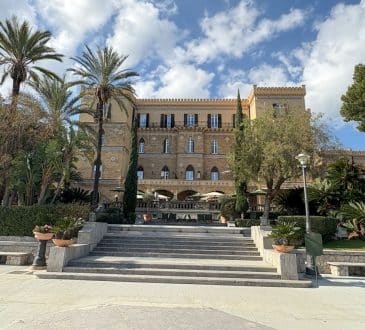Meetings: Three Steps to Organizing Your Boardroom to Enhance Productivity

In today’s mobile world people are increasingly able to work seamlessly from just about anywhere. But the reality is, your company’s office space still plays a major part in your company’s corporate culture, how employees communicate and how work gets done. The boardroom is one space that can create a big impact on communication, collaboration, and innovation in your business.
For many companies, boardrooms are no longer seen as just traditional meeting places. Technology, real-estate costs, and shifting demographics are changing the way we interact at work. So boardrooms are also now seen as a hub for video conferencing, brainstorming, quiet work, client presentations and of course even interviews; all each of which require different degrees of space and privacy.
That means the classic boardroom design, which is just a formal conference table surrounded by chairs, isn’t always the norm anymore, even though it’s still practical under certain circumstances. Boardrooms no longer have a one-size-fits-all setup for productivity and effective communication.
Here are three ways your company can create spaces, specifically meeting rooms or the modern boardroom, that fit your goals, your workflow—and most importantly, your staff.
- Understand Your Employees
Before you can create spaces that inspire creativity and enhance productivity, you have to first understand how your employees work and their needs to deliver. Many managers have followed the trend of informal and email-driven communication styles. However, research shows that formal methods of communication, like meetings with set agendas that require face-to-face participation are more efficient and lead to fewer errors than meetings or projects that rely on emails and phone calls for communication.
No wonder experts recommend balancing a formal communication style with a smart choice of meeting location and meeting location design. For example, research has also shown that naturally lit meeting rooms can increase productivity and improve work performance of employees. With this in mind, you can get some inspiration from Blackboard Inc. below, where their naturally-lit meeting room also offers a view of the skyline, as well as a variety of different sitting options to suit different working styles—or for additional attendees during larger meetings, with bench-style sitting at the back.
Standing meeting rooms, productive pods, and biophilic designs are also innovative strategies for designing spaces that retain the effectiveness of formal meetings, while also adapting to the needs of today’s employees.

- Be flexible
The key to creating good, collaborative meeting spaces is to also allow for flexibility. Remember, your goal is to provide convenient meeting spaces, without needing the creation of dedicated, separate rooms. Creating more, but smaller meeting rooms instead of just one large boardroom can also be a good option to utilize space. After all, some or many meetings (depending on your company) may involve only two to three people. In other workspaces, it may mean creating flexible, multipurpose areas that can be partitioned with moveable walls that can also act as whiteboards.
The offices of Birchbox, whose space embodies multipurpose flexibility, is an example of thoughtful design. They include: round desks within the office for quick chats, smaller meeting rooms with conference lines, as well as a more traditional boardroom for more formal meetings.
These options inspire creativity in employees, making it easier for them to collaborate and communicate effectively. Here’s a look at one of Birchbox’s meeting spaces.
- Get creative
If you want your employees to create, they need to feel inspired. Meeting spaces can encourage an internal culture of innovation. Creating dedicated collaboration zones can also give employees space to propagate ideas. Key features of an inspiring collaboration zone includes: unobtrusive furniture, whiteboards, accessories like notepads and pens, as well as design elements that can stimulate “creative juices”—think office color and other natural elements like plants.
The Mapbox Office in Washington DC offers employees a flexible brainstorming space that includes many of these inspiring elements, while maintaining a feeling of professionalism that matches the company culture, design elements and “vibe” of a relaxed, yet professional atmosphere.
When companies organize their conference room workspace to focus on their employees’ needs, provide inspiring aesthetics, while also incorporating ways to use tools and technology for collaboration, there will be pleasant results. Boardrooms are evolving to meet the needs of the 21st century employee, and people understand better how office space design and structure enhances or kills productivity.
Seek design inspiration from other companies, even if they’re your competitors, but don’t copy blindly. Consider your company’s environment, processes, employees, and values for optimal design. This way, you’ll show you care about one of your most valuable resources—your employees.
Do your company’s office spaces take all these into consideration? If not, the boardroom may be the place to start, even if it means having a meeting.
Have you read?
Six Practical Tools toward Self-Improvement.
The Most Important Components of a Successful Email Marketing Strategy.
Tackling IoT for Smarter Homes, Communities, Businesses [Infographic].
Here’s How CEOs In Real Estate Can Make The Blockchain Work For Their Companies.
The Starter’s Guide to Building Brand Equity.
Bring the best of the CEOWORLD magazine's global journalism to audiences in the United States and around the world. - Add CEOWORLD magazine to your Google News feed.
Follow CEOWORLD magazine headlines on: Google News, LinkedIn, Twitter, and Facebook.
Copyright 2025 The CEOWORLD magazine. All rights reserved. This material (and any extract from it) must not be copied, redistributed or placed on any website, without CEOWORLD magazine' prior written consent. For media queries, please contact: info@ceoworld.biz











